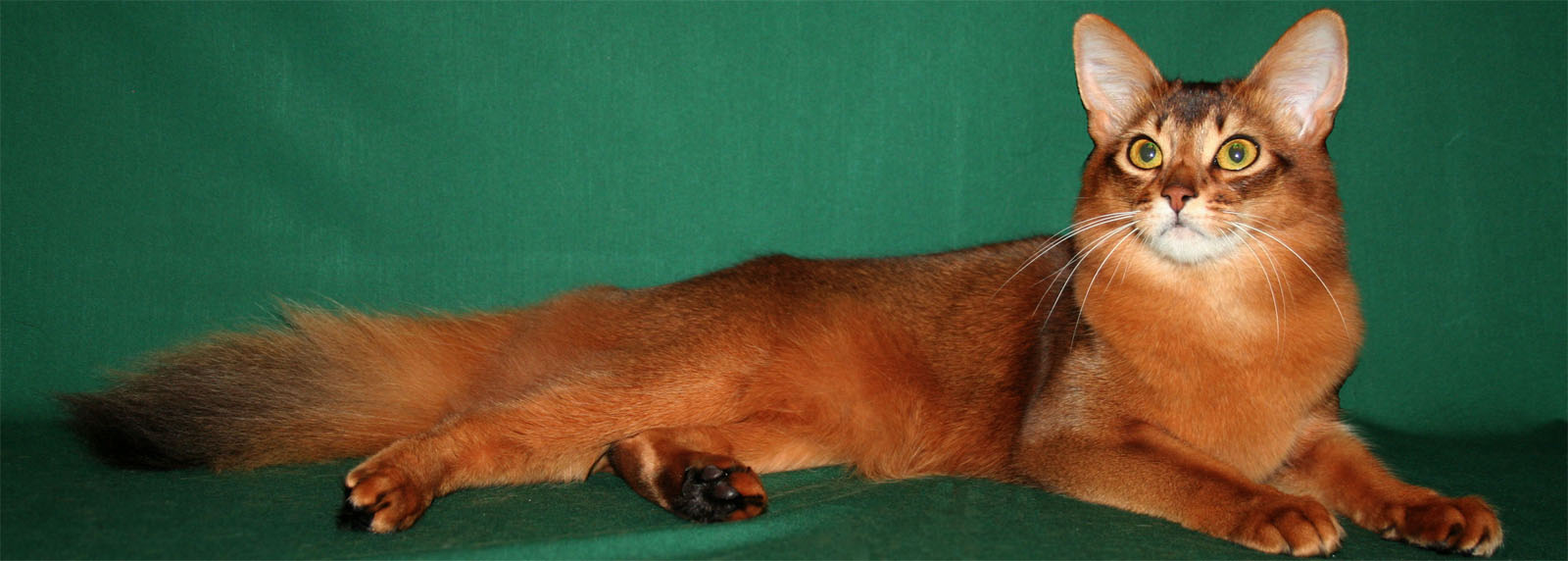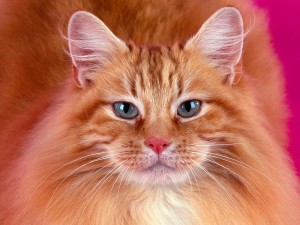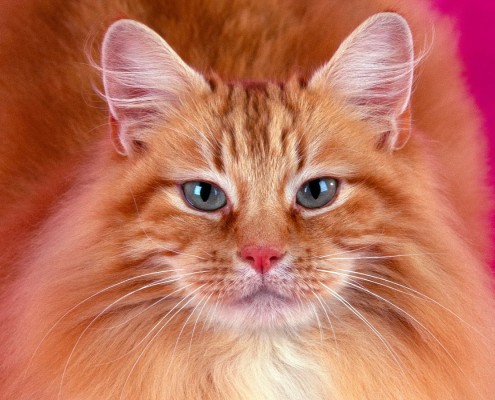Somali

Meoww!!
The Somali Cat is a medium built cat with a solid bone structure and large muscles. They have a long silky coat that is ticked in colouring like their Abyssinian cousins.
In 5 Words
- Alert
- Curious
- Intelligent
- Playful
- Charming
Snapshot
WEIGHT RANGE:
Male: medium: 8-12 lbs.
Female: medium: 8-12 lbs.
EYE COLOR:
Green, Gold
EXPECTATIONS:
Longevity Range: 9-13 yrs.
Social/Attention Needs: Moderate, High
Tendency to Shed: Moderate, High
COAT:
Length: Long
Characteristics: Smooth
Colors: Red, Ruddy, Blue, Fawn, Sorrel
Pattern: Ticking
Less Allergenic: No
Overall Grooming Needs: Moderate, High
CLUB RECOGNITION:
Cat Association Recognition:
CFA, ACFA , TICA

Characteristics
Learn About the Somali
The Somali Cat began as unwanted accidents in the 1950s and 1960s, with long-haired kittens turning up unexpectedly in short-haired Abyssinian litters. Descendants of these cats occasionally produced kittens with long or fuzzy coats, and in 1963, Mary Mailing, a breeder from Canada, entered one into a local pet show. Ken McGill, the show’s judge, asked for one to breed from.
The first Somali recognized as such by a fancier organization was Mayling Tutsuta, on of McGill’s cats. As of the late 1970s, the Somali was fully accepted in North America. . Two Sorrel Somali kittens were born in a litter with four Sorrel Abyssinians in Great Britain in 1971. In 1972 Mague founded the Somali Cat Club of America and began bringing the Somali enthusiasts together.
In 1975 the CFA’s International Somali Cat Club was founded and in 1978 the Somali breed earned Championship status in the CFA. The Ruddy and Sorrel Somalis were accepted by the Cat Fanciers’ Association (CFA) in 1979. The Blue was accepted by the CFA in 1986 and the Fawn in 2000. The breed was officially recognized by the British purebred cat registry in 1983, and was awarded championship status from the GCCF in 1991. This breed is rapidly increasing in popularity world-wide. It has an especially wide following in the United States and in Japan.
The Somali Cat is a medium built cat with a solid bone structure and large muscles. They have a long silky coat that is ticked in colouring like their Abyssinian cousins. This breed has often been described as fox like due to their extremely long bushy tail and large pointy ears. The almond shaped eyes are large and expressive. Dark lids surrounded by lighter areas make Somalis have a mesmeric look. Eye colour is usually green or gold. Each eye has a dark pencil line that continues from the upper lid toward the ears. Adult males weigh 10 to 12 pounds, adult females weigh 6 to 10 pounds.
The Somali Cat are very affectionate cats, giving as much love and attention as they receive. They make perfect family pets, always wanting to be in the centre of things, never just sitting in a corner hoping to be noticed. alert, curious, intelligent cats that love to play. They are also very affectionate with their owners. This doesn’t mean they are lap cats, though; Somalis are high energy and high curiosity cats that are constantly attracted to movement and their surroundings.
This may leave little time for lap naps and snuggle sessions. Certainly there will be unconcerned about getting a little wet in order to retrieve fish from a fish tank to let you do have fish ensure is always kept in place or otherwise you might find a self making some unwilling savings on your cat food bill.. Along with a playful nature, the Somali thrives on affection and attention from its owner. They are highly interested in everything and everyone around them.
These cats form close bonds with their human family, and when they do take a rest from playtime they greatly enjoy cuddling and lots of lap time. Somalis are not particularly well-suited to homes with many other companion animals, because they prefer that all the available attention be directed towards them. All in all, this is a charming, cheeky breed with a bright-eyed and bushy-tailed disposition, making them wonderful companions for cat lovers of all ages. . The Somali will enjoy playing and will become a formidable hunter if allowed outside.
They are predisposed to developing certain hematological (blood) disorders, including pyruvate kinase deficiency (which can cause severe anemia) and increased osmotic fragility of red blood cells (erythrocytes). They also can develop a neurological condition called myasthenia gravis, which in cats causes drooling, regurgitation, weakness, lameness and abnormal flexion of the neck.
- Early-onset periodontal disease.
- Hyperesthesia syndrome, a neurological problem that can cause cats to excessively groom themselves, leading to hair loss, and to act frantically, especially when they are touched or petted.
- Patellar luxation, a hereditary dislocation of the kneecap that can range from mild to severe. Severe cases can be alleviated with surgery.
- Progressive retinal atrophy, a degenerative eye disease.
- Pyruvate kinase deficiency (PKD), for which a genetic test is available to identify carriers.
- Renal amyloidosis, a heritable disease that occurs when a type of protein called amyloid is deposited in body organs, primarily the kidneys in Abyssinians. It eventually leads to kidney failure.
The Somali Cat is very occasional combing will be the only grooming that you will need to give this cat as the coat very rarely gets tangled or matted and stroking will normally remove any loose hairs – they so thrive on human attention that they won’t even notice that you are grooming them, and will just treat it as a bonus cuddle! As a larger breed, they may eat a little more than some other breeds.
They will eat most good quality brands of cat food, but will also enjoy treats of cooked chicken, ham and grated cheese. However, cows’ milk will probably give them a stomach upset, and a bowl of water should always be available.






